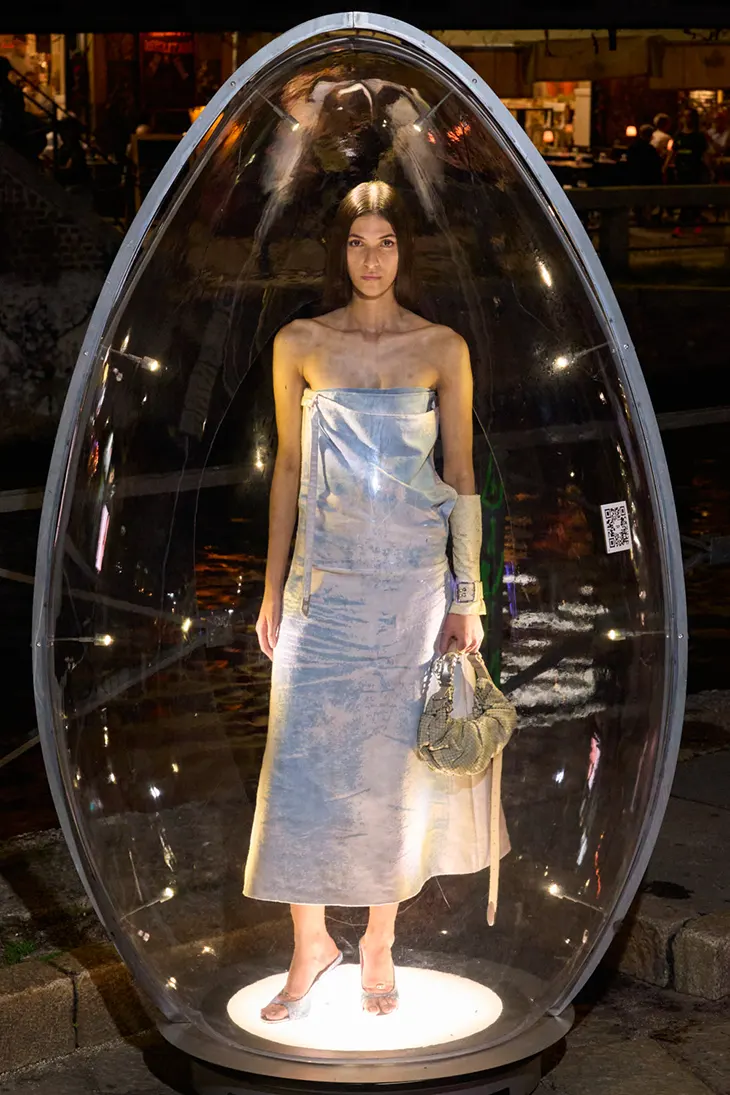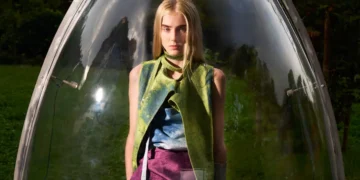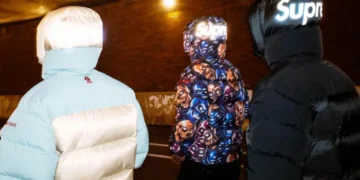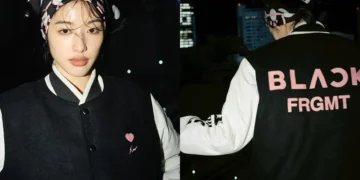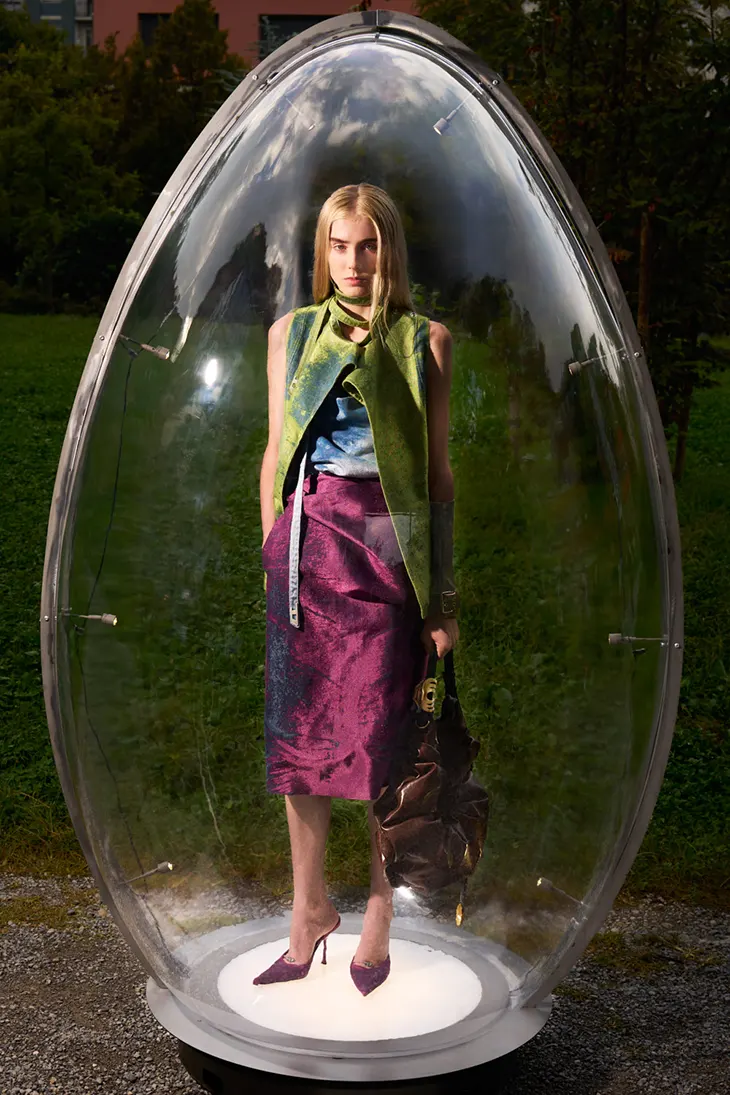
Glenn Martens has turned the Diesel runway into a citywide game, transforming Milan into a playground of fashion. With the patronage of the Municipality of Milan, Diesel’s Spring Summer 2026 unfolded through the “Diesel Egg Hunt.” Fifty-five looks were hidden across the city in transparent egg-shaped capsules, placing the collection in full public view. For Martens, this was a statement: fashion as democratic spectacle, accessible to everyone, with the same thrill for those on the street as those usually seated front row.
SPRING SUMMER 2026
At the core of the collection lies Diesel’s ongoing fascination with pushing material limits. Satin denim, newly developed from recycled polyester, appeared in apron dresses, sleeveless bikers, and coats with biker-strap deconstructions. Vividly colored and lasered for distressed effects, it captured the brand’s raw energy while underscoring a more responsible approach to production. Jacquards of distressed satin denim carried the same ethos, with apron tops and dresses amplifying texture and wearability.

Playful tailoring was another highlight. Jackets were reimagined with biker straps spilling from lapels, adaptable and chaotic in their tying. Little dresses looked wrapped and strapped directly onto the body, suggesting spontaneity. Knits with ties at the neck and deconstructed bikers with cocoon neoprene sleeves pushed familiar categories into new forms. Leather skirts, cut rough like animal hides, reinforced Diesel’s irreverence, while mini-dresses printed with imaginary animal skins doubled down on the surreal edge.
Knitwear moved into trompe l’oeil territory, with jumpsuits and dresses stitched as if patched from multiple garments, their seams deliberately left open. Florals appeared in distorted ways, vivid knit blossoms scattered against faded grounds or chiffon dresses surrounded by shredded clouds at the shoulders, suggesting fragility within Diesel’s usual toughness. Double-layer pieces, meanwhile, teased the eye with inverted proportions: larger internal layers spilling out beneath tighter outer shells, twisting silhouettes into optical riddles.
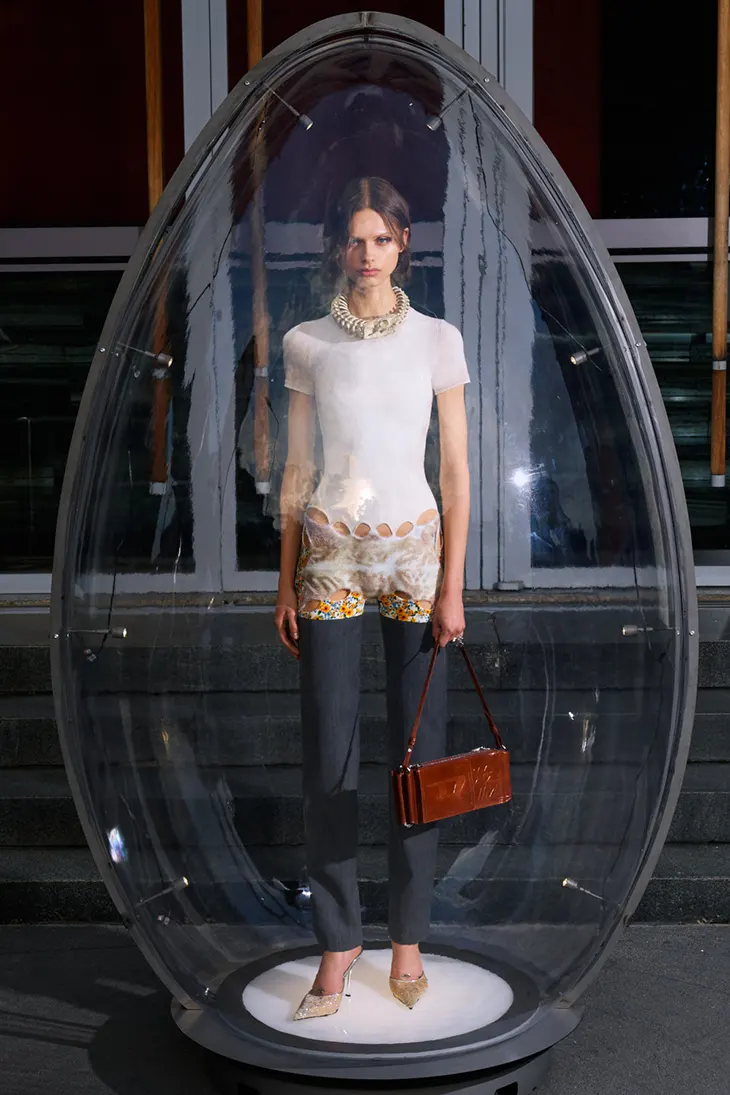
Utility dominated through multi-pocket coats, jackets, skirts, and pants, cut open and bonded with jersey to reframe function as decoration. Denim, the house cornerstone, underwent radical treatments: bleached from the inside out, garments looked like skeletal X-rays of themselves, reinforcing Martens’ message of revealing what hides within.
Accessories followed suit in experimentation. The new Load-D bag offered a slouchy softness, contrasted by the structured denim D-Pods bag with four molded Ds. The Flag-D bag reappeared folded and layered into three zipped leather versions, mutating a classic into something fresh. Footwear carried Diesel’s coded play: mules with floating Ds, strappy metallic-toed heels tangled around the ankle, and loafers on chunky track soles. Jewelry echoed anatomy—vertebrae-like bracelets and skeleton-inspired necklaces, while Vert watches glittered with pavé crystals. Eyewear debuted with Round-D oversized acetate frames and Geck-D sculptural acetate shades.
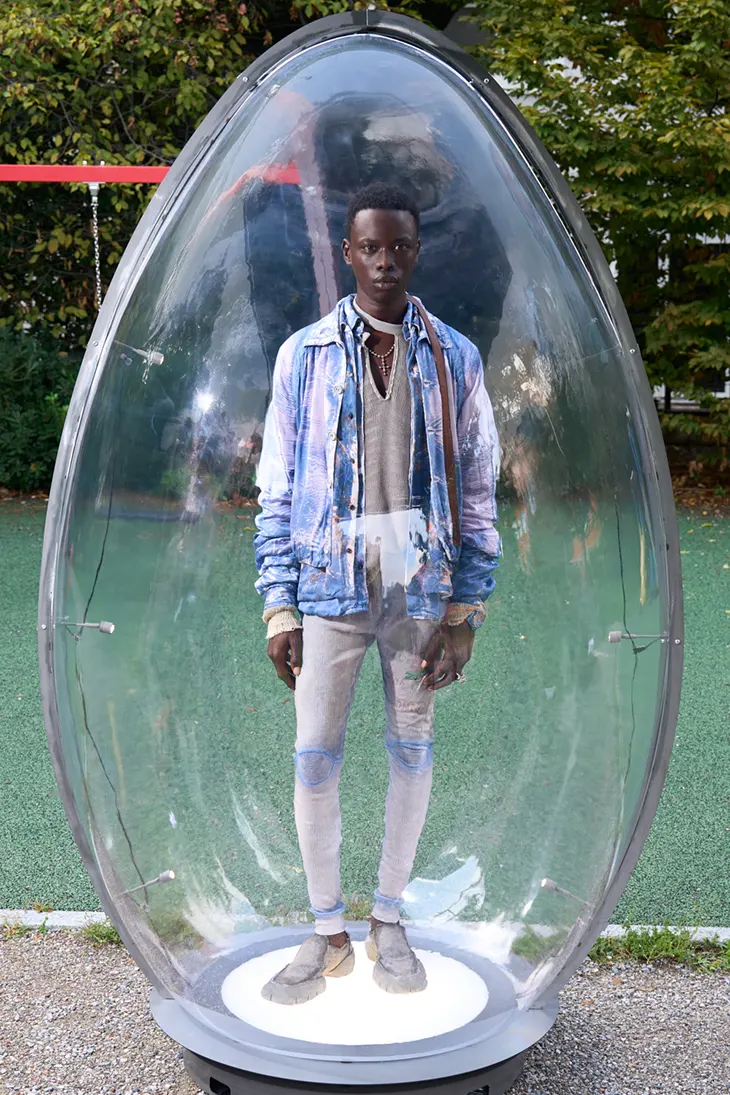
Diesel’s Spring Summer 2026 made Milan its stage, reframing fashion as an urban hunt and a collective discovery. Martens blurred lines between spectacle and wearability, function and trickery, pushing the house’s codes into ever more experimental terrain. It was a collection about rewriting the rules, an invitation to play, to look closer, and to reconsider what lies beneath the surface.
